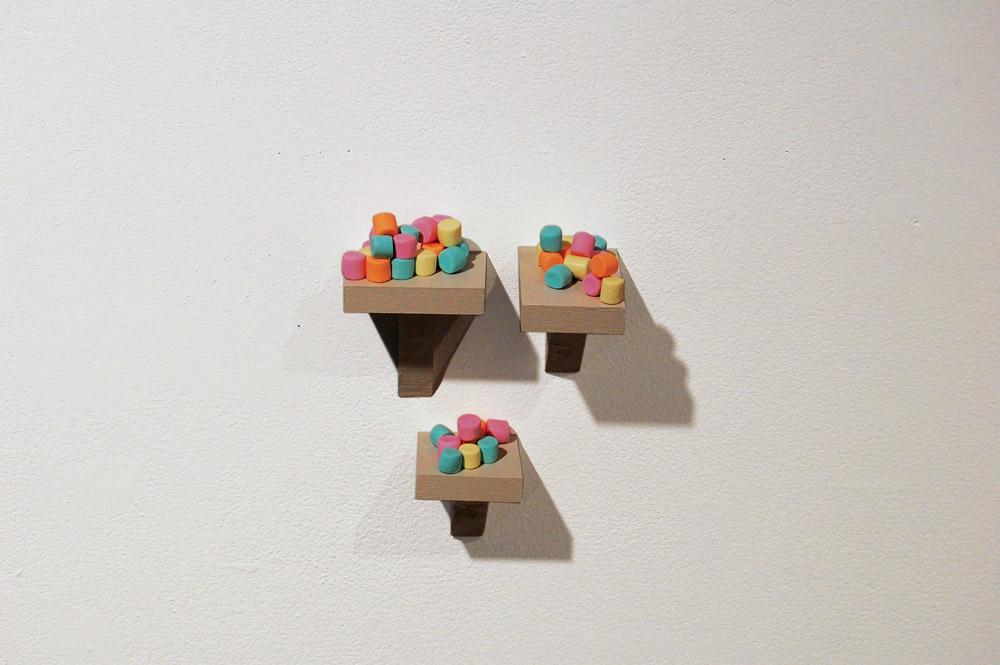The title of this exhibition, “if found—return to me,” came from an inscription that the artist, Elisabeth Belliveau, dutifully writes on her journals, even though she has lost a few and none has ever been returned to her. Belliveau is one of those peripatetic artists who sets up studios wherever jobs, grants or residencies take them, and many of the works in the exhibition reflect those travels: to Newfoundland, Berlin, upstate New York and Italy. Her work is quiet, at times tentative, and captures the reflective space of travel—of being in between destinations. At times it is achingly biographical.
Collage works are loosely assembled into what the artist calls “an expanded sketchbook”: cohesive threads tie together the lovely watercolours, drawings on lined yellow paper, fragments of text, maps, charts and sometimes video and found material. I felt no pressure to decipher the artist’s intentions, yet I slyly reconstructed the pieces in order to gain some unspoken insight. The video Still life lessons/Berlin (2012–13) lingers on mundane things—a glass on a table, a town seen from a train—with text mainly providing tips on how to draw. That video was confounded somewhat by an adjacent work, let go (2012–13), with coloured Fimo marshmallows, rainbow streamers and a drawing of Rihanna; it shifts and feels like a memory, marking an unwanted absence, as if to say the party is over.
Three videos lined one wall. In ever mine (2013), two circles are cut into a small, white geometric box, inside of which dangerous-looking dogs play tug of war on the sidewalk. In another box, secret work/breaking up (2013), a young man plays with a Rubik’s cube on a train. Both are one-minute loops. The setup accentuates the viewing process—no casual glances here. In Berlin Guts (2012), a longer, confessional text is set against idiosyncratic vignettes from numerous cities (if only the narrator would whisper in my ear)—full of promise and disappointment.
In Go so we may see (2011–12), Belliveau uses dark plasticine—which creates a greasy but nonetheless delicate effect—to render a series of stop-motion animation sequences that show female characters at moments of emotional, psychological or physical transformation. Stripped of their context, these walking women and girls hold only anticipation. Across the room, posted on the wall, Emily Dickinson’s poem “The Inevitable” echoes that tension: “While I was fearing it, it came, / But came with less of fear, / Because that fearing it so long / Had almost made it dear.”
Something more than a journal has been lost.
The original version of this review appears in the Summer 2013 issue of Canadian Art, which is available on newsstands now, as well as through the App Store and Zinio.









